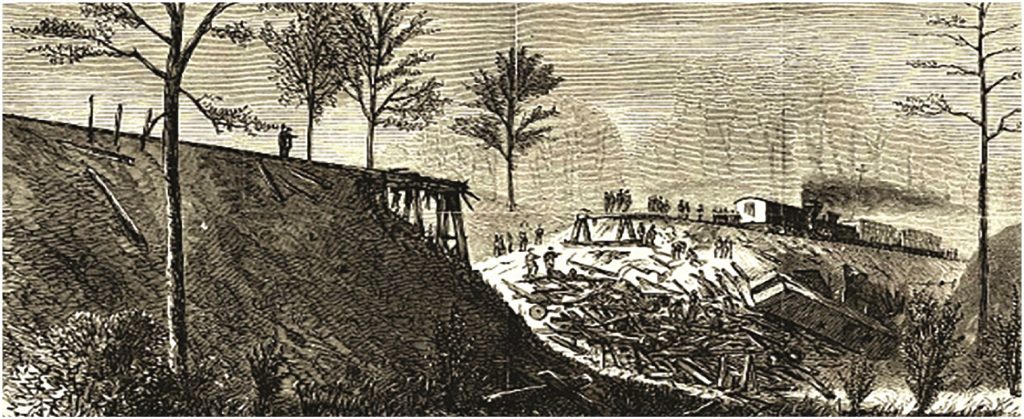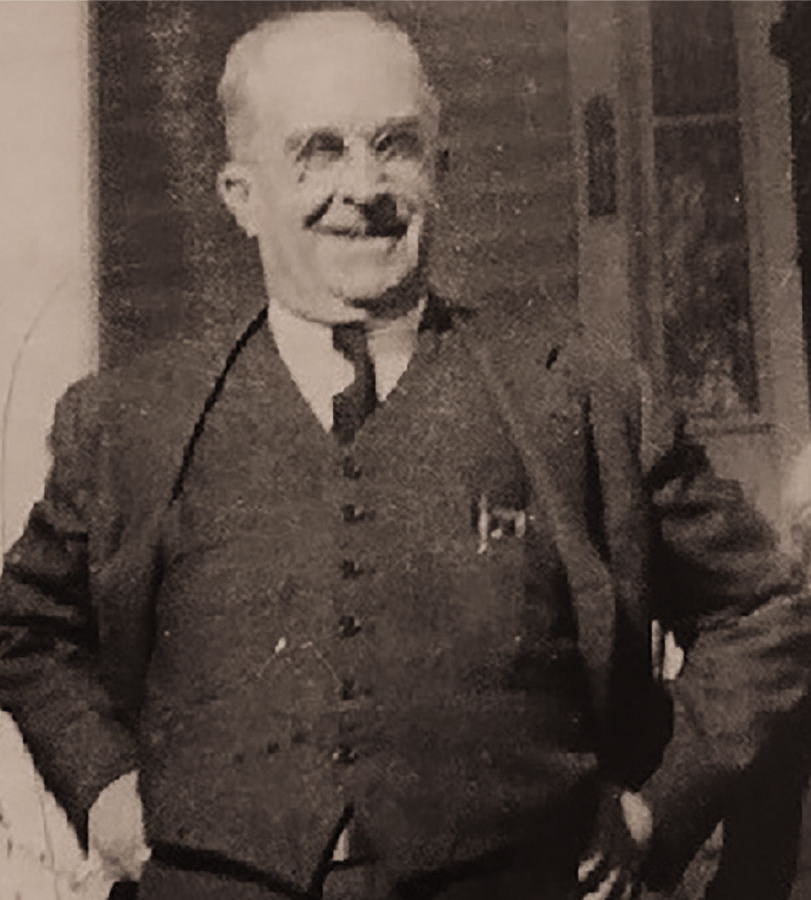
Harper’s Weekly ran this illustration in their March 19, 1870 edition. It shows the February 25, 1870 train wreck at Buckner's Trestle in Oxford, Mississippi.
About one hundred feet long and half as high, the wooden bridge was built in the 1850s and on February 25, 1870, it made national news. The 3:00 pm mail train left Oxford for Water Valley and while several cars made it across, the timbers gave way and cars tumbled violently into the ravine. Twenty died and 60 were hurt. J. W. Simonton wrote a vivid account of the crash for the New Orleans Picayune that ran in several U.S. newspapers.
“The anguish of surviving friends of the killed and wounded was pitiable to behold. A husband, wild with grief at the loss of his wife, suddenly snatched from his side by death, just when he had newly arrived in the new world, which he had crossed the ocean to find, drew tears from eyes not used to weeping.” —New Orleans Picayune
Fifty-eight years later, in June of 1928, lightning struck a second time in the same spot. After heavy rains had loosened the soil, here came the No. 34, the “Bilbo,” steaming north from Water Valley. And when the train’s pressure was brought to bear, the earth shifted and the trestle collapsed.
Forty-two passengers were injured. Among them were several Ole Miss students and professors. One of the educators was Dean of Commerce James W. Bell, great-grandfather of Campbell McCool.
“My great-grandmother was from Water Valley and during my great-grandfather’s teaching years, they would catch the train south to visit her family. They were on the old Bilbo when the trestle went down and his injuries would affect him for life. He broke many bones and spent the next year bedridden.
He was an Ole Miss legend. He played football in the late 1890s and stayed involved with Ole Miss athletics for decades. He graduated and left Oxford for New York and Columbia, where he received a graduate degree, before returning to Ole Miss.” —Campbell McCool





